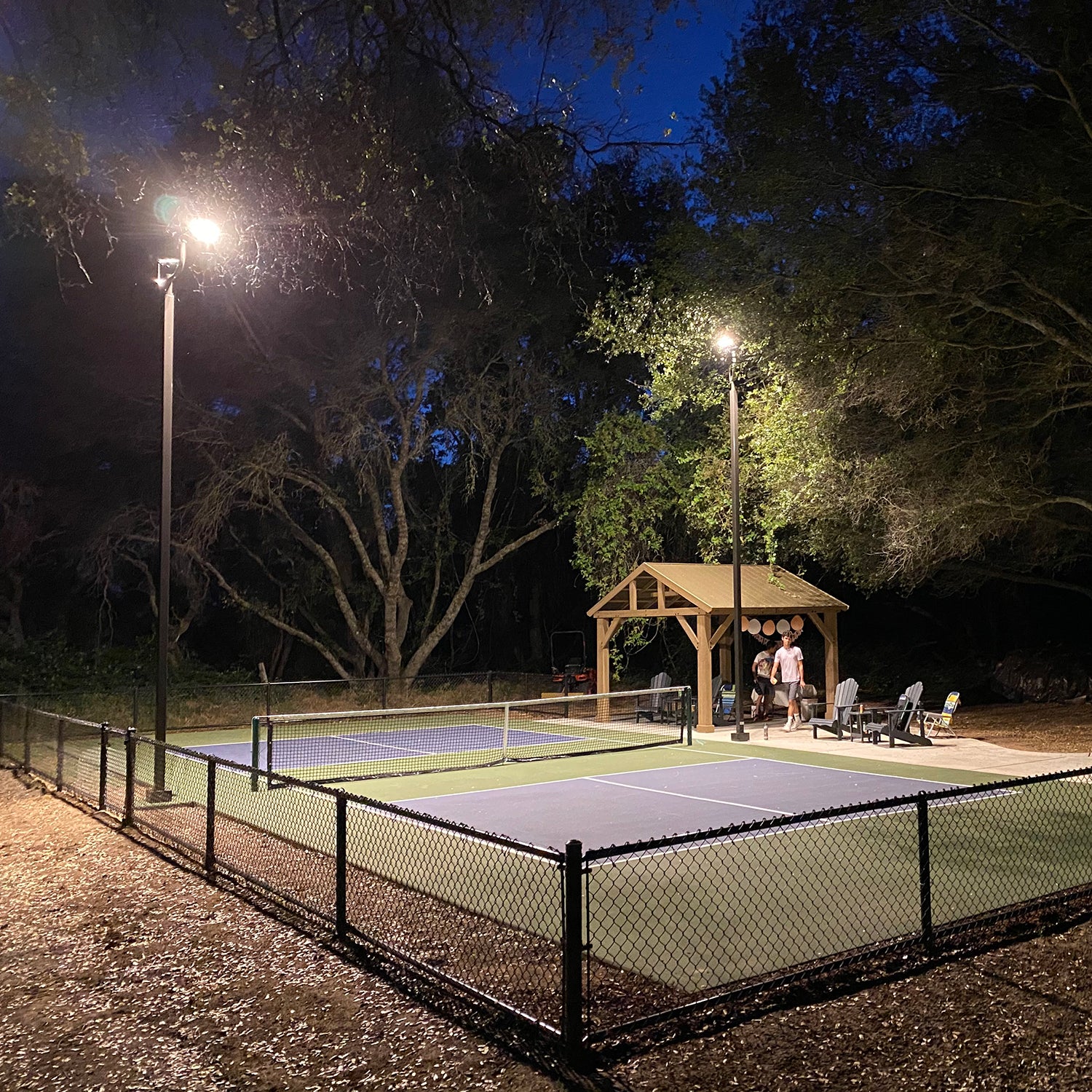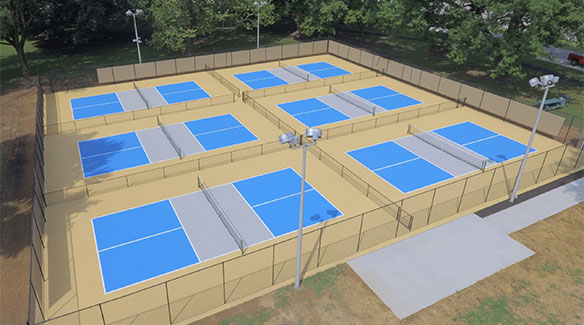Crucial Steps for Effective Pickleball Court Construction in Your Community
Crucial Steps for Effective Pickleball Court Construction in Your Community
Blog Article
Navigating Regulations for Pickleball Court Construction in Your Location
Creating a pickleball court in your area needs a nuanced understanding of numerous neighborhood laws, consisting of zoning laws, structure authorizations, and security criteria. Each community enforces certain guidelines that can dramatically impact the feasibility of your project. Engaging with regional authorities and the area is critical for making sure conformity and fostering support. Navigating this regulatory landscape can be complicated and taxing. What are the crucial actions you should consider to prevent prospective risks and make certain a smooth construction procedure?
Understanding Neighborhood Zoning Regulations
When thinking about the construction of a pickleball court, recognizing neighborhood zoning legislations is critical to making certain conformity and staying clear of prospective legal problems. Zoning laws determine how land can be used and usually consist of specifications pertaining to entertainment facilities. These regulations can differ considerably by community, affecting elements such as court positioning, dimension, lighting, and sound degrees.
Before starting construction, it is important to get in touch with the neighborhood zoning board or preparation division to establish the particular regulations that apply to your property. Specific zones may restrict leisure tasks, while others may need certain authorizations or adherence to certain standards. It is also essential to consider problems, which identify exactly how far frameworks must be from property lines or various other buildings.
Additionally, private growths, such as property owner associations (HOAs), might enforce their own guidelines regarding the construction and use of pickleball courts. Recognizing these laws can stop pricey alterations or lawsuits down the line. Involving with neighborhood stakeholders and neighborhood participants can offer valuable understandings and foster assistance for your project, making sure that it aligns with the neighborhood's assumptions and demands.
Acquiring Necessary Building Allows
Exactly how does one browse the intricacies of acquiring needed structure permits for a pickleball court? The procedure begins with understanding regional laws and demands stated by municipal authorities. Normally, you will require to submit a detailed site strategy that describes the proposed court measurements, products, and design. This strategy ought to conform with zoning legislations and any kind of specific laws relating to entertainment centers.

When authorizations are gotten, it is vital to comply with any kind of assessment routines and demands throughout the construction phase. Maintaining communication with local authorities will certainly promote a smoother authorization procedure and help stay clear of potential obstacles. By extensively preparing and recognizing the allowing landscape, you can effectively navigate the intricacies included in constructing a pickleball court while continuing to be certified with all local policies.

Assessing Environmental Impact
When preparing the building of a pickleball court,A detailed analysis of ecological impact is essential (Pickleball court construction). This examination aids identify possible effects on regional ecological communities, water sources, and neighborhood visual appeals. Secret elements to think about consist of site selection-- ensuring that the court is not improved ecologically sensitive land, such as wetlands or habitats for endangered varieties
Dirt security and drainage patterns must be assessed to stop disintegration and water pooling, which can negatively influence bordering vegetation and wildlife. Furthermore, the choice of products is essential; going with green and lasting alternatives minimizes environmental harm.
The application of reliable stormwater administration methods is another important aspect, as it assists alleviate overflow and sedimentation. Involving with neighborhood ecological agencies can supply beneficial insights right into policies and like it finest methods certain to your area.
Last but not least, neighborhood input can be useful in understanding any kind of neighborhood environmental issues and promoting assistance for the job. By conducting a complete environmental impact assessment, stakeholders can make certain that pickleball court construction lines up with sustainable techniques and contributes positively to the neighborhood's eco-friendly health and wellness.
Conforming With Safety Standards
Making certain conformity with security criteria is important for the successful construction and procedure of a pickleball court. Following recognized safety and security policies reduces the risk of mishaps and injuries, making certain a secure atmosphere for players.
Key security criteria consist of correct court dimensions, surface area products, and lighting needs. The court must satisfy the main measurements of 20 feet vast by 44 feet long for increases play, with ideal barrier zones to protect against injuries from wayward spheres. Pickleball court construction. The surface should be created from non-slip materials to boost grip and lower the chance of falls
Furthermore, illumination has to suffice for find out night play, giving consistent lighting to stay clear of darkness that can impede exposure. Local building ordinance may also dictate specific requirements for fencing and web elevation to guarantee gamer safety and security and stop unapproved accessibility to the court location.
Routine inspections and maintenance are important to maintain these standards in time. By prioritizing safety conformity, court owners not only protect players but also foster a positive online reputation within the neighborhood. This dedication to security can urge higher engagement and satisfaction of the sport, inevitably adding to its development and sustainability.

Involving the Neighborhood in Planning
Neighborhood participation in the planning phases of pickleball court building can significantly enhance the project's overall success. Involving neighborhood citizens and stakeholders cultivates a feeling of ownership and urges collaborative decision-making, which can lead to wider support for the effort.
To properly involve the area, coordinators ought to launch public conferences or workshops, providing a system for homeowners to articulate their viewpoints and preferences relating to place, design, and amenities. Studies and comments forms can additionally be used to gather insights from a broader audience, making sure that diverse point of views are taken into consideration.
In addition, creating a community advisory board can help with recurring conversations and address worries throughout the preparation process. This board can consist of agents from numerous demographics, such as local institutions, recreational companies, and neighborhood watch, thus amplifying neighborhood representation.
Efficient interaction is vital; updates pop over to this site about the task must be consistently shared through e-newsletters, social media sites, or neighborhood notices. By prioritizing neighborhood involvement, organizers can grow interest, minimize prospective resistance, and develop a pickleball facility that genuinely reverberates with regional values and requirements. This collective technique not just improves the job but also strengthens community ties.
Conclusion
To conclude, navigating the intricacies of pickleball court construction requires a comprehensive understanding of neighborhood laws, consisting of zoning regulations, structure permits, and safety and security criteria. Performing ecological analyses is necessary to alleviate ecological effect, while community involvement can boost support for such jobs. By adhering to these standards and promoting collaboration, successful application of pickleball courts can be achieved, promoting recreational chances and area wellness. Proceeded persistance in these areas will guarantee lasting and compliant growth.
Creating a pickleball court in your area calls for a nuanced understanding of numerous regional guidelines, consisting of zoning laws, building authorizations, and security criteria.When taking into consideration the building of a pickleball court, understanding local zoning regulations is essential to making sure conformity and avoiding possible legal issues. By thoroughly preparing and understanding the permitting landscape, you can effectively navigate the complexities entailed in building a pickleball court while staying compliant with all neighborhood policies.
In verdict, browsing the intricacies of pickleball court construction demands a comprehensive understanding of regional regulations, consisting of zoning legislations, building authorizations, and security requirements. By sticking to these guidelines and cultivating partnership, effective implementation of pickleball courts can be achieved, advertising entertainment possibilities and neighborhood well-being.
Report this page